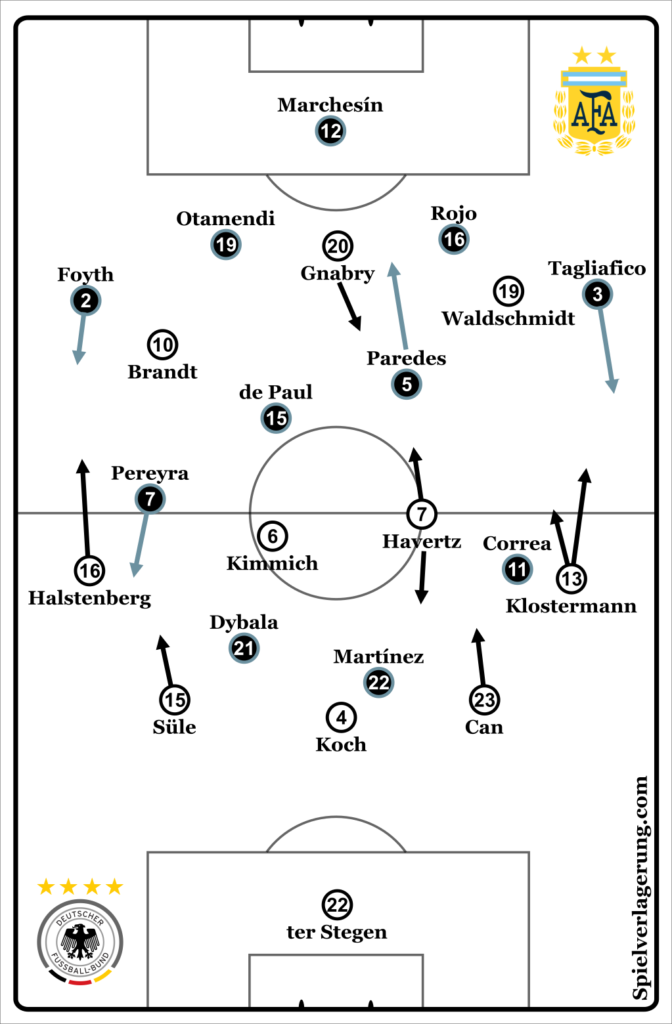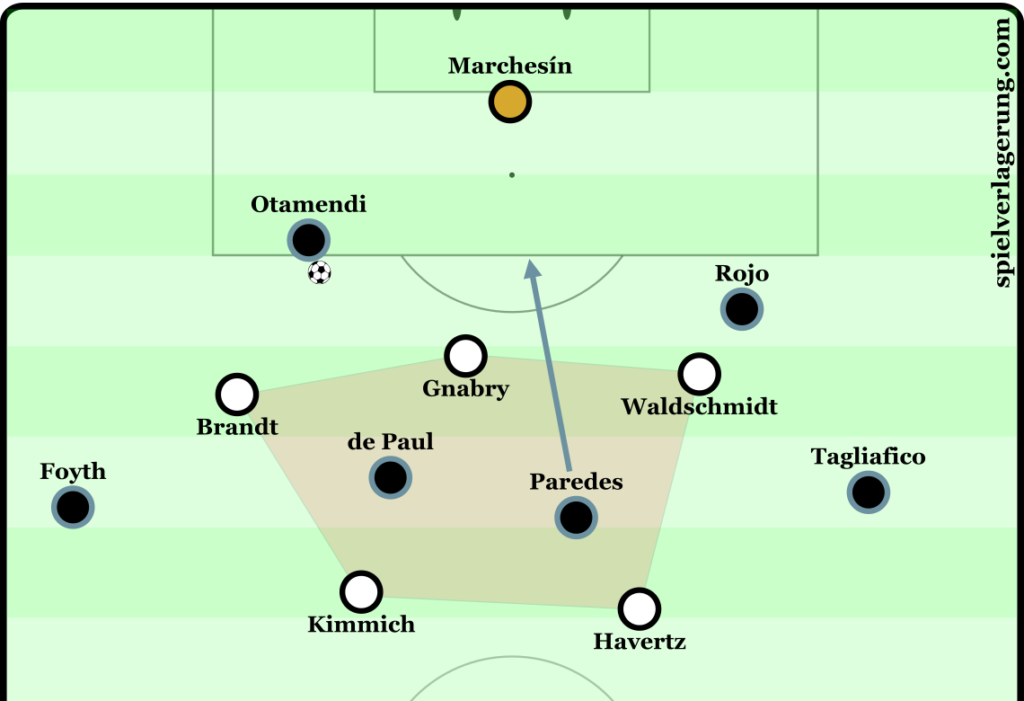Where’s the hitch in Germany’s national team?
About nine months ahead of Euro 2020, the German team still finds itself in an identification stage. Head coach Joachim Löw has to deal with a torrent of cancellations and at the same time fights on numerous fronts. The 59 year old is not free of fault when it comes to the team’s roller coaster ride.
Ahead of the 2-2-draw against Argentina, Löw once again opted for a customary 3-4-3 formation. This came as a bit of a surprise, seeing as he had decided only for the recent competitive fixture against Northern Ireland to ditch the 3-4-3 in favour of the more traditional 4-2-3-1.

In terms of personnel, Löw could easily have played with a back four instead of a back three. After all, he went with Emre Can in defence, despite his being at home in midfield for a number of years. This decision alone was testament to the fact that Löw still wants to continue to try out the 3-4-3 formation.
The return to a 4-2-3-1 against at best second-rate Estonia also does not change that picture. Evidently, Löw at the moment considers a formation containing a back four as a viable option in meetings with clearly over-matched opponents, whom he expects to mainly sit deep anyway.
Wing pairing as a key element
The benefits of the 3-4-3 formation, on the other hand, became apparent especially in the first half of the Argentina match. The two players on the wings, Lukas Klostermann and Marcel Halstenberg, were able to regularly move forwards on the flanks and round the more compactly staggered South Americans. This only worked, though, precisely because three and not just two defenders offered support from the back. Can, as well as Niklas Süle, were able to move to wider areas or move forward in the half-spaces. The team used its numeric advantage against a classic 4-4-2 pressing approach accordingly.
This tactical effect became especially obvious for example when Serge Gnabry scored the first German goal against Argentina. In the buildup phase, Süle moved forward and a shifted play with a long ball to Klostermann, who enjoyed enough space close to the touchline to break through towards the goal line after receiving the ball.
The continuous sprints of the two wingers are features of the kind of football Löw considers apt for this DFB team. Klostermann and Halstenberg are well-versed in this kind of up-tempo football from their club RB Leipzig, where they dart into attacking zones in quite a similar manner and put pressure on the opposition over the flanks. Coupled with smart movement from Gnabry, as well as Kai Havertz, in the gaps, this creates a promising kind of attacking football.
Among German attackers, Gnabry stands out the most at the moment. Usually, he plays a more complex role in the national team than at Bayern Munich. And still, the 24 year old tackles this problem very well. His dropping back into the ten-space and the way in which he cleverly positions his body towards the ball allow him to serve as an outstanding receiving option. The opposition can also hardly brace for Gnabry’s follow-up actions, because he can both use the dynamism of the pass and move past the closest opponent quickly, should he be in immediate proximity, and quickly redirect the ball to the wings. On his terms, Gnabry gives the German attack penetrating power.
Pressing under scrutiny
The quality of pressing, however, has now for a long time cast major doubts over the true capacity of the German team. A national team can only subsist at the highest level, if it presses reasonably well. This holds especially true for the Germans, who to a certain extent feed off winning the ball and quick counterattacks in Löw’s envisaged playing style.
Against Argentina, the recently changed form of German pressing came to light. The five central players ahead of the back line formed a compact block and thus mostly thwarted the Argentinian defensive midfielders Leandro Paredes and Rodrigo de Paul. As a result, Paredes dropped between the centre-backs more and more often as the game went on and thus accelerated long balls toward the wide forwards, who were positioned high up the pitch.

The German press, however, lacked consistency, which can basically be said about the performances of the DFB-team in general over the last few months.
In-game coaching as a major shortcoming
The positive approaches in both attacking play and the press are visible for one half or perhaps an hour, until the opponent makes changes accordingly. This had been the case in the 2-4-loss to the Netherlands in Hamburg a few weeks ago; and it was no different in the draw with Argentina.
This lacking consistency is also the major shortcoming that has to be attributed to Löw. For, however strong the gameplans of the head coach may be, he usually fails to answer tactical changes during the game. He seems to only insufficiently react to a risky playing style by the opposition in particular — the quicker advancing of the wingers or the stronger occupation of attacking zones.
Against Estonia, on the other hand, Germany had the goings-on largely under control, however, the positional play in the frontal zones was too often too simplistic, which had already been a problem in other matches, for example recently against Northern Ireland. Löw failed to make his influence count from the touchline, even if his hands were tied by a sending-off for Can after less than a quarter of an hour.
Even still, the national coach could have ordered his attacking players to stagger them less symmetrically or to deliberately use overloads or positional rotations. As it were, they stuck to the same movements forward by the full-backs and the less than inspired recycling of possession in midfield, which is why the DFB-team failed to generate any kind of dynamism.
Thus the attacking performance was similarly mediocre to so many things about the German national team at the moment.
Keine Kommentare vorhanden Alle anzeigen